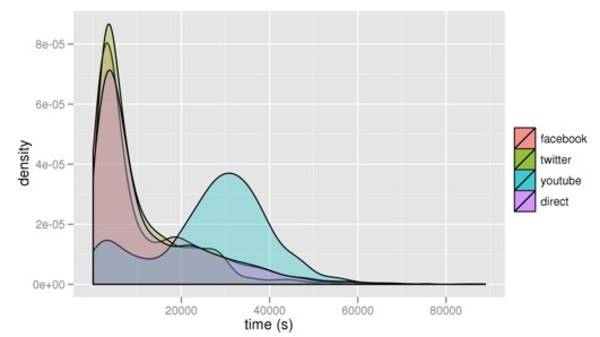According to bitly, the half-life of a link isn’t measured in weeks or days, it’s about three hours on most social networks. Does it matter where the link is posted? Absolutely. For the most bang for your social media buck, YouTube is the winner.

The half-life of a link is the amount of time it takes for a link to get half the clicks it will ever receive. The company looked at the half-life of 1,000 popular bitly links posted to Twitter, Facebook and YouTube to see whether it matters where a link is posted.
For good measure, the company also looked at direct links – those that are sent out via email or over IM. The results? Hilary Mason, chief scientist at bitly, says that links posted to Twitter have a mean half life of 2.8 hours. Facebook boosts that to 3.2 hours, and direct sharing has a half-life of 3.4 hours. YouTube, however, beats them all hands down with a half life of 7.4 hours.

Mason says it does vary significantly. “Many links last a lot less than 2 hours; other more sticky links last longer than 11 hours over all the referrers. This leads us to believe that the lifespan of your link is connected more to what content it points to than on where you post it.” In other words, you might get a slight edge by posting to Facebook versus Twitter (if you don’t do both) but the content matters most. Good (or controversial) stuff rises to the top and has a longer life. Uninteresting stuff sinks quickly.
By the way, if you’re a fan of hacking data, you should check out Mason’s “What Data Tells Us” talk at Strata 2011.
For what it’s worth, my own observations dovetail with bitly’s findings. When sharing links on Twitter, most of the momentum is in the first few hours – sometimes the first 30 minutes. Facebook has a little more oomph. The nature of Twitter is much more fleeting, Facebook links get more lift as people leave comments and attract their friends to discussions. But in the end it’s (mostly) about content rather than the sharing service.





















